America once had a love affair with the coupé utility. These little trucks promised to be the best of both worlds. They were cars that you could take to town on the weekend and then use for work during the week. No ute is for sale in America today, and in their last gasp, they got weird. In the final years of the iconic Chevrolet El Camino and its brother, the GMC Caballero, General Motors sold a small car-based truck with a thrifty V8 diesel engine. There was only one problem: it came too late to make a difference.
For more than the past three decades, diesel engines have been known for their distinctive combination of power and fuel economy. Diesel trucks regularly return better fuel economy than their gasoline-powered siblings while also putting down more torque. Historically, these engines have also been known to survive hundreds of thousands of miles, often with only minimal repairs. Diesel engines may be losing their edge today thanks to high diesel prices, sometimes poorly implemented emissions equipment, and the rise of diesel-like gasoline engines, but most heavy-duty pickup trucks still ship with diesels.
However, the story was very different back in the 1970s. Back then, diesel engines were not applied to pickup trucks as a method of upping their firepower. Instead, America went through not just one, but two gas crunches. If that wasn’t bad enough, the nation’s economy was in a trough, too. Suddenly, everyone cared about saving fuel.

Automakers and inventors scrambled to find ways to ease the pain, from the rise of fascinating, but ultimately crappy electric cars, to developing vehicles powered by Wankel rotaries. The diesel engine was also seen as a bit of a magic cure. Several decades ago, diesel was usually cheaper than gasoline. Small diesel truck engines were not powerhouses in those days, but they sipped fuel compared to their thirsty gasoline counterparts.
General Motors often gets a bad rap for how it handled its diesel program of the late 1970s. Indeed, early examples of the 5.7-liter Oldsmobile diesel V8 were infamous for finding fascinating, yet infuriating ways to break. But what’s not often told is that General Motors fixed its diesel. GM’s diesel engines actually became pretty good for the era, just in time for everyone to stop caring. One of the victims was what would become one of the rarest models of GM’s famous coupé utility. Yep, the El Camino came in a diesel version, but its run was so short that it barely even existed at all.

Goofing Up
The story of how General Motors screwed up the Oldsmobile diesel V8 has been told countless times since its inception. If you’ve missed those explainers, I’ll keep it short. Here’s what Lewin wrote about the Oldsmobile diesel V8’s development:
Oldsmobile engineers decided to start with what they knew, and based their work on the existing Oldsmobile 350 cubic-inch V8. It was this decision that played a role in the failures to come. That’s because a diesel engine typically runs at a far higher compression ratio than a typical gasoline engine. A gas engine might run at somewhere between 8:1 and 12:1, while diesels typically run from 14:1 to 22:1. This is mostly because gas engines are desperately trying to avoid compression ignition of the fuel, while diesel engines rely on that same effect.
The engine’s designers took this into account to some degree, designing a reinforced block for the diesel application. Other changes included hardened camshafts, larger main bearings, and tougher, thicker connecting rods and piston pins.
For all that the engineers did, they didn’t go far enough. The diesel engine’s heads used the same head bolts and 10-bolt pattern as the gas engine. This decision was made to allow the diesel engine and gasoline engine to share some of the same tooling. However, it meant that the head bolts were extremely overstressed in the diesel application. They were more than capable of handling the cylinder pressures of a gasoline engine, but they couldn’t take the additional strain of the high-compression Oldsmobile diesel design, which ran at a lofty 22.5:1. The design really needed more head bolts, and likely stronger ones too, but budget concerns won the day.

Not often reported in these tales is the fact that General Motors controlled a 60 percent share of the diesel passenger car market.
The engine, which launched in 1978, was pushed hard into the GM product portfolio. Oldsmobile said that it sold 19 different models that were available with the engine. GM diesels were plopped into everything from coupés and sedans to wagons and extended wheelbase executive cars. These diesels sold exceptionally well, too, with General Motors selling hundreds of thousands of examples each year. Sales peaked in 1981 with more than 310,000 diesel cars sold. When all was said and done, GM had installed diesel power into over a million cars and pickup trucks by around 1985, with most examples actually being cars.
That’s phenomenal. To put that into comparison, in the modern day, Volkswagen was the king of diesel car sales in America with its TDI “Clean Diesel” cars. In 2014, right before the hit of Dieselgate scandal, Volkswagen sold 79,422 TDIs in America, a fraction of the diesel cars that GM used to sell in the 1980s. In 2014, these cars represented more than a fifth of all of Volkswagen of America’s sales.

Despite its success in the marketplace, the Oldsmobile diesel V8 drove down a bumpy road, as I previously wrote:
The Oldsmobile diesel V8 had a knack for stretching or snapping its head bolts, leading to blown head gaskets at best or hydrolocking from coolant ingestion at worst. If your Oldsmobile diesel V8 didn’t blow its head, it could have also lost its injectors and internals to corrosion since Oldsmobile neglected to add a water separator to ensure your diesel fuel didn’t have water contamination. Yet, if you somehow lucked out on both counts, maybe the timing chain would stretch out.
The Oldsmobile diesel V8 was so infamously unreliable that it wasn’t certified for sale in California. Normally, something like this would happen because of emissions. In this case, it’s because all nine of the Olds diesel-equipped cars failed to complete the state’s emissions testing program. Every test vehicle had engine issues while seven of the vehicles had additional transmission issues on top of their bad engines.

If you’re scratching your head about how engineers could make such a garbage engine, you should know that, reportedly, it wasn’t really their fault. As The New York Times reported, Oldsmobile diesel engineer Darrel R. Sand tried to blow the whistle, and his efforts were allegedly met by getting fired.
As the New York Times wrote, General Motors was hammered by lawsuits left and right. Individuals sued, consumer protection groups sued, groups of people sued in class actions, and even the New York Attorney General sued GM over the diesel debacle. When the dust settled, General Motors had to deal with the 10,000 people across 14 states who demanded a uniform redress program in addition to all of the other lawsuits.
Not Giving Up
Here is where many stories about GM’s diesel development of the 1980s end. Less often reported is that General Motors corrected the disaster.

In 1981, Oldsmobile launched a new, fixed version of its 5.7-liter diesel. Engineers redesigned the diesel’s heads, used stronger head bolts, and upgraded the head gasket material. Further improvements, Curbside Classic notes, came to the Stanadyne injector pump. The previous iteration had a plastic collar that had a knack for failure, while the new version had a metal collar. GM also changed the engine’s glow plugs and transitioned from flat tappets, which wore quickly, to roller lifters and hardened cams. These upgraded engines, identified with “350 DX” on their blocks, didn’t suffer from nearly as many failures as the earlier engines.
As a result, the New York Times wrote in 1983, complaints about engine failures dropped precipitously in 1981 with the debut of the upgraded engine. Finally, General Motors built the Oldsmobile 5.7 diesel that it should have made in the first place, and as I noted, diesel sales hit their peak that year.
It wasn’t a fluke, either. The video above shows John Davis of MotorWeek praising an Oldsmobile 98 Regency for its quality improvements and good fuel economy.
The El Camino Goes Diesel
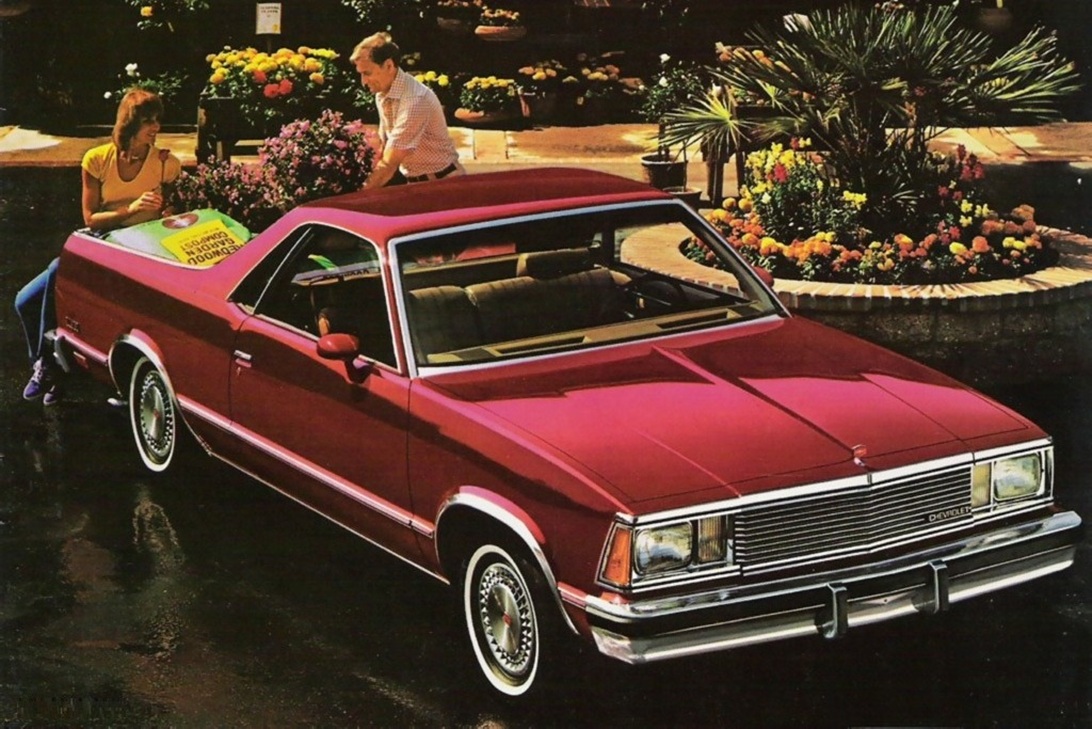
The story of the El Camino is a great example of how being the first isn’t always the most important thing. In American coupé utility lore, the Ford Ranchero, which launched in the final days and hours of 1956, blew the public away. It wasn’t the first American coupé utility, but it was the first for what was then the modern era, and people were hooked. The Ranchero was a truck, a car, and a fashion statement all in one package.
As In The Garage Media writes, it’s possible that designer and executive Harley Earl might have pitched the creation of a GM coupé utility as early as 1952. General Motors took its time to wade into this market, first experimenting by building pickup trucks with car-like body details like the 1955 Chevrolet Cameo Carrier. Ultimately, it would take the Detroit giant until October 16, 1958, to deliver a proper coupé utility to market. The El Camino was born.
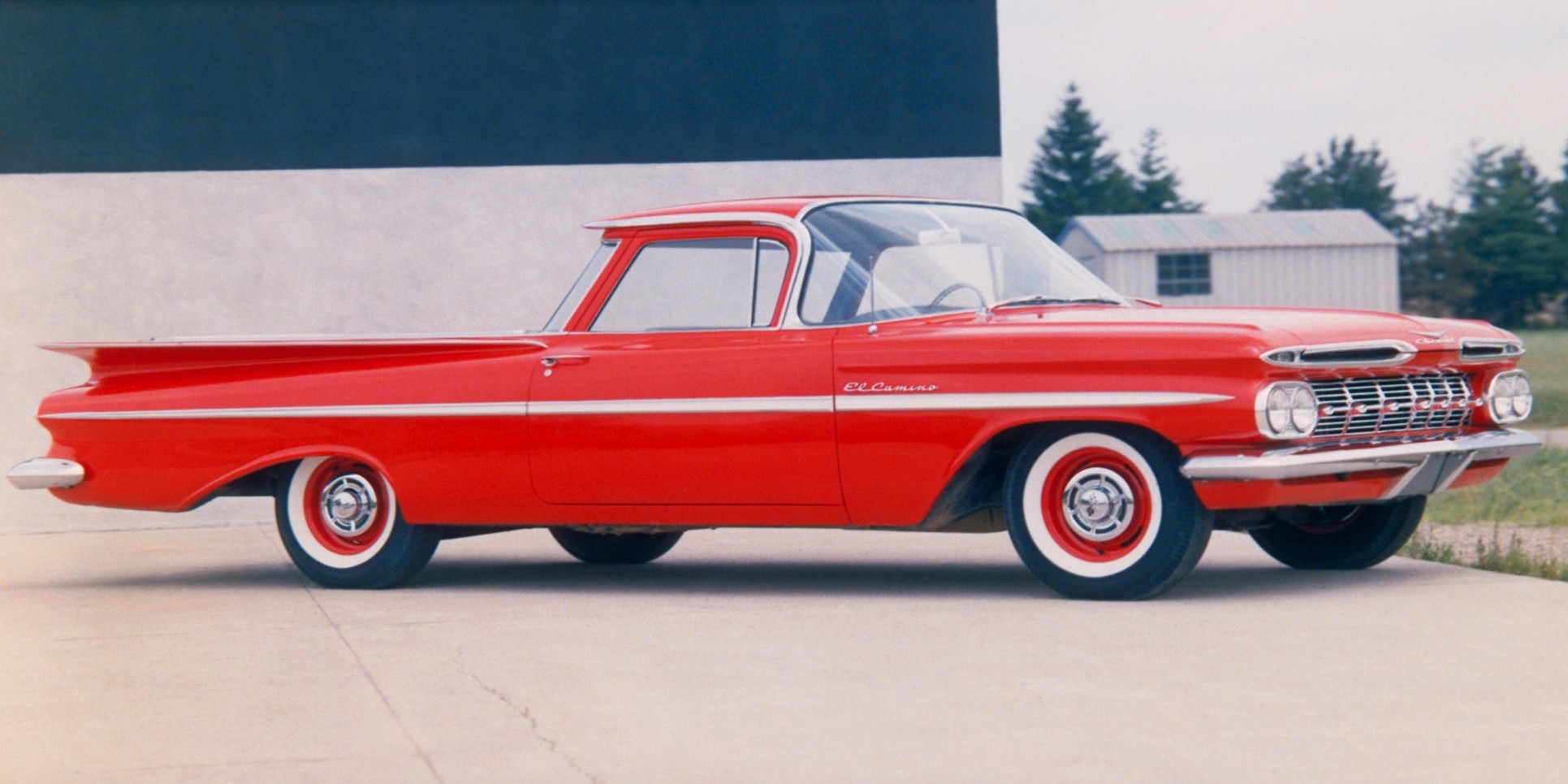
The El Camino might have been nearly two years late, but General Motors did its homework. The El Camino bore GM’s freshest styling for 1959 and, importantly, rode on the new GM B platform that underpinned the Brookwood station wagon. This made the 210.9-inch El Camino about eight inches longer than a Ranchero, and the El Camino rocked rather splendid full-size style.
Underneath, GM said, the El Camino was pretty close to being a proper truck with a steel double-wall bed and protective steel skids in said bed for the loading of heavy items. Payload was 1,150 pounds, or 40 pounds short of a well-equipped Ranchero. GM’s wanting buyers to think of the El Camino as a type of truck was reflected in the marketing. The Ranchero wasn’t a member of Ford’s F-Series, but Chevrolet was happy to call the El Camino a Task-Force truck.
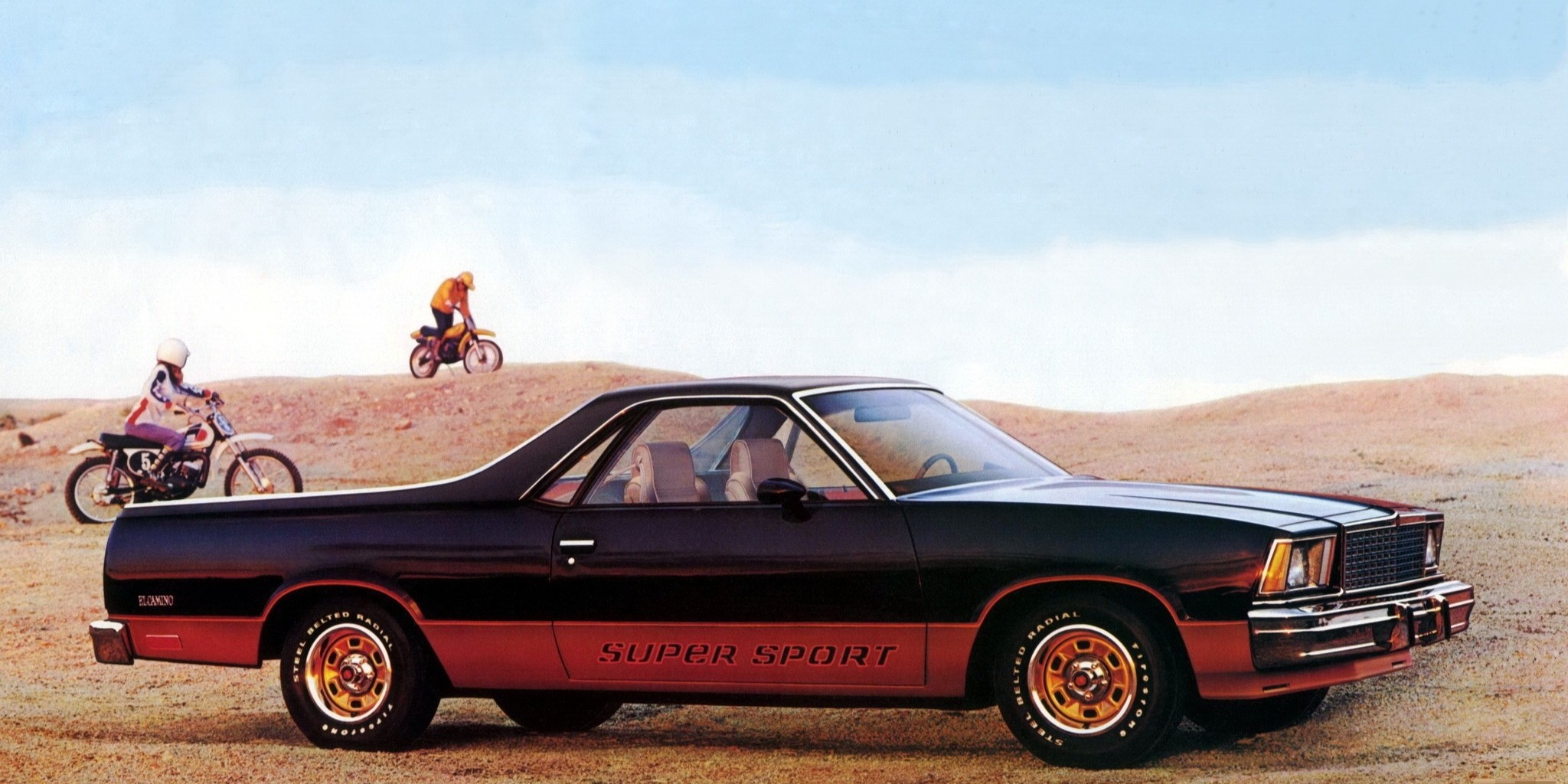
It was also just pretty neat as a vehicle; buyers had a choice of one of 23 color combinations and engines ranging from a thrifty 235 cubic inch straight-six that made 135 HP gross to a rumbling 348 cubic inch V8 good for 315 HP gross. In its first year of sales, the El Camino sold 22,246 units, more than the 14,169 Rancheros sold in that same year. The El Camino would continue to eat the Ranchero’s lunch throughout its production run. Ford was first, but to many consumers, Chevrolet did it better.
Ford would give up on the Ranchero in 1979, but GM’s coupé utilities from Chevrolet and GMC managed to keep momentum into the 1980s. That’s where the diesel comes in.

The El Camino entered its fifth generation in 1978. For this new El Camino, Chevrolet kept with the times and downsized its coupé utility. However, as Old Cars Weekly writes, engineers were concerned that making the El Camino too small would compromise its capabilities. Their solution was to make the El Camino’s body some seven inches shorter to 201 inches, but extend the wheelbase by one inch to 117 inches. This engineering trickery had the effect of lowering weight by up to 300 pounds, while still resulting in a larger cab than the fourth-generation model.
As Old Cars Weekly notes, the fifth-generation El Camino was a body-on-frame design, and the base engine had become a 200 cubic inch V6. In the earlier El Camino, the base engine was a 250 cubic inch straight-six. Quality improvements included 14 noise-insulating body mounts to quiet down the cab and double-walled metal for the doors, hood, bed, and tailgate.

A total of eight engines were offered during this generation. The weakest engine, the aforementioned V6, made 95 ponies, while the hottest gasoline engine, a 350 cubic inch small block V8, made 170 HP. The weird engine choice debuted in the 1983 model year, and it was the updated version of the Oldsmobile 5.7-liter diesel V8, which made 105 HP.
As noted earlier, the addition of a diesel here wasn’t for power like it would be in a modern truck. Instead, it was all about saving money. The diesel made 200 lb-ft of torque, which was bested by the 240 pounds of twist offered by the 305 V8 offered in the El Camino in the same year. This was also reflected in towing capacity, as diesels could pull 2,000 pounds, but El Caminos with the 305 could tow 5,000 pounds.

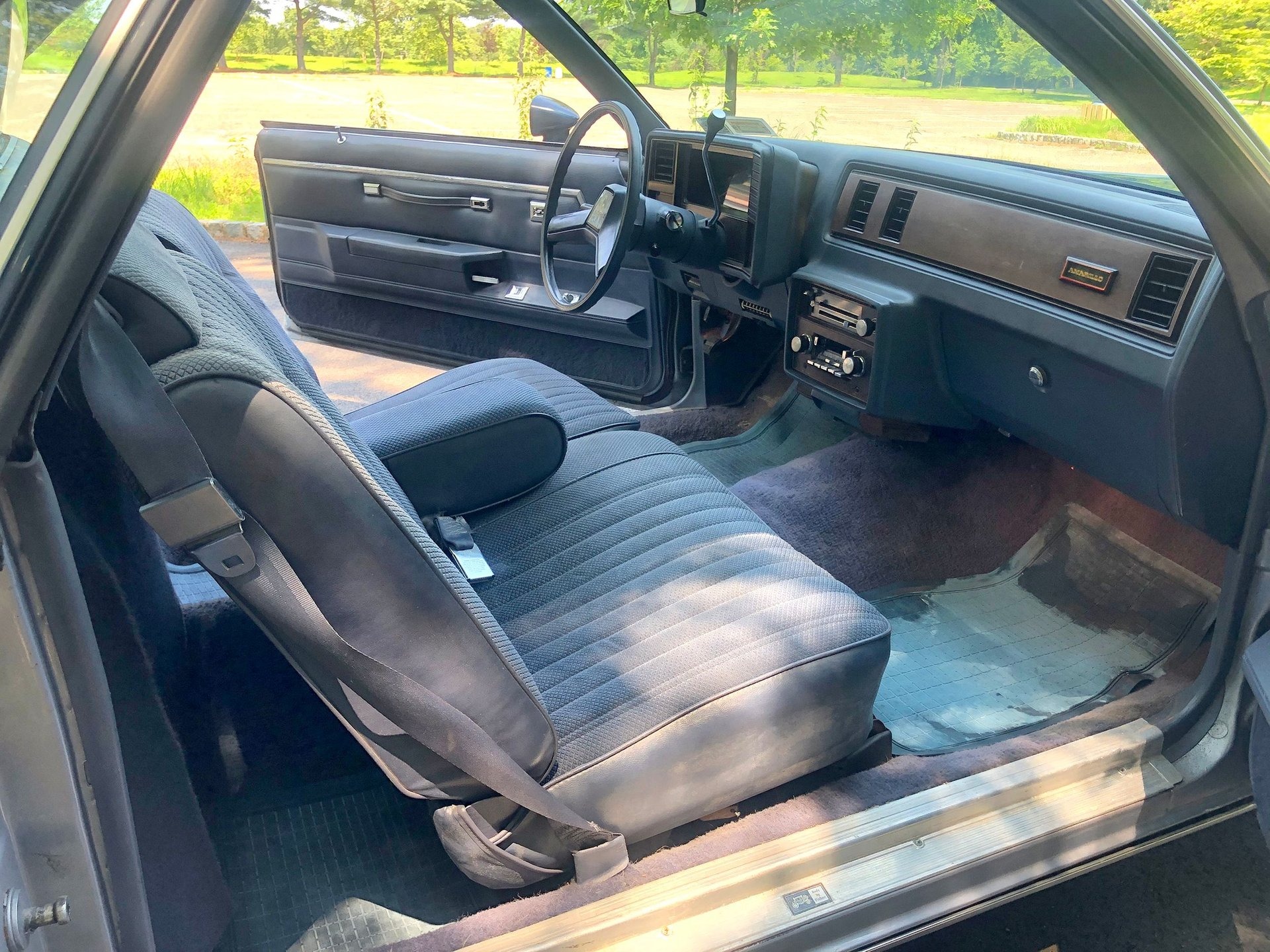
Something interesting is that, according to the brochure, if you bought the El Camino diesel, you could not get a sport suspension or the gauge package that included a trip odometer and a clock. But you were able to get the package with a trip odometer, clock, and tachometer.
This diesel engine was also sold in the El Camino’s twin, the GMC Caballero. GM never quoted fuel economy numbers in the brochure, but as Diesel World notes, the diesels were good for the mid-20 mpg range at 55 mph in other applications. That was great back then, especially considering that gas V8s got in the teens in the same conditions.
Unfortunately, the diesel El Camino never resonated with buyers. Diesel El Camino and Caballero sales were halted after 1984, after only a few examples were sold.
Diesel No More
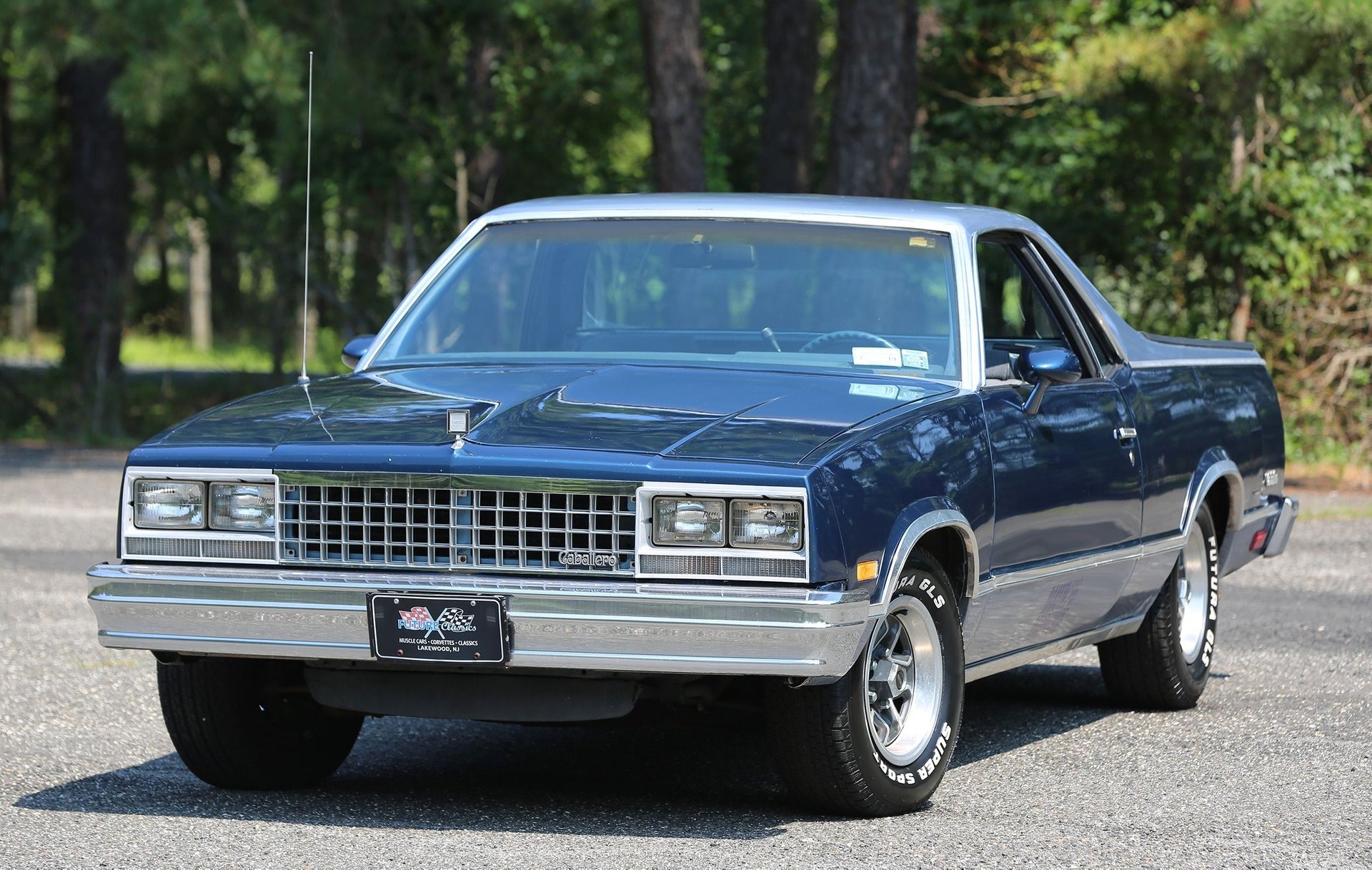
No official explanation exists for the short life of GM’s diesel coupé utilities, but MotorWeek has explained why American diesel cars failed in the mid-1980s to begin with. In one video, John Davis explains that, by the mid-1980s, the price of diesel had risen past the price of premium gasoline. This was a problem because diesel cars were already significantly more expensive than their gasoline counterparts, and few buyers were interested in paying more for the car just to also pay more for fuel. Davis also noted that by 1984, diesel cars accounted for less than four percent of all cars sold in America.
It was only a year later when GM canceled its diesel program, which by that point had also included a 4.3-liter diesel V6 and other variants. For nearly three decades after, General Motors would stay out of the diesel passenger car market, instead leaving that field to marques like Volkswagen. GM wasn’t alone, either. Even Japanese brands that had experimented with diesel in the 1980s in America, like Toyota, also gave up.

Tradecraft Specialties, which claims to get its data from the GM Heritage Center, says that only 571 El Camino diesels were built in 1983, followed by 98 in 1984. GMC Caballero diesel sales are unknown, but they’re believed to be even rarer than their Chevy sibling. I couldn’t find original MSRP data for the diesels, either. Either way, the diesel El Camino is so rare that even Google’s wholly incompetent, useless AI thinks that it didn’t even exist.
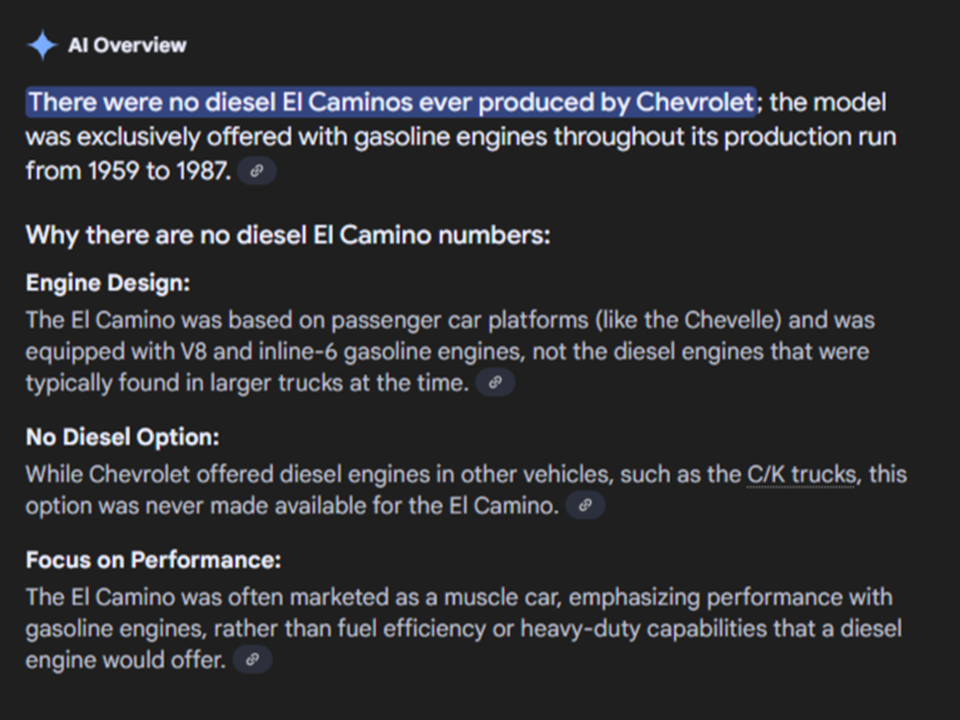
Keep up the good work, Google. Thanks for the job security!
Sadly, the diesel version of the El Camino was so short-lived that I could not find any period review. That said, I’m not sure it matters. As we established, getting a diesel meant less power and less towing capacity. The only reason to buy one was to get V8-ish power with V6-ish fuel economy, but that advantage had been largely erased by the mid-1980s.
Still, I find myself in love. Imagine rolling up to a car show, people thinking that you diesel-swapped your El Camino, and then those people find out that it was a factory job. But that was just how General Motors was back then. It believed in diesel so much that it put diesels in darn near anything that moved. I wonder what might have happened had GM gotten these engines correct from the start?
(Topshot: Car – Future Classics LLC, Engine – GM)

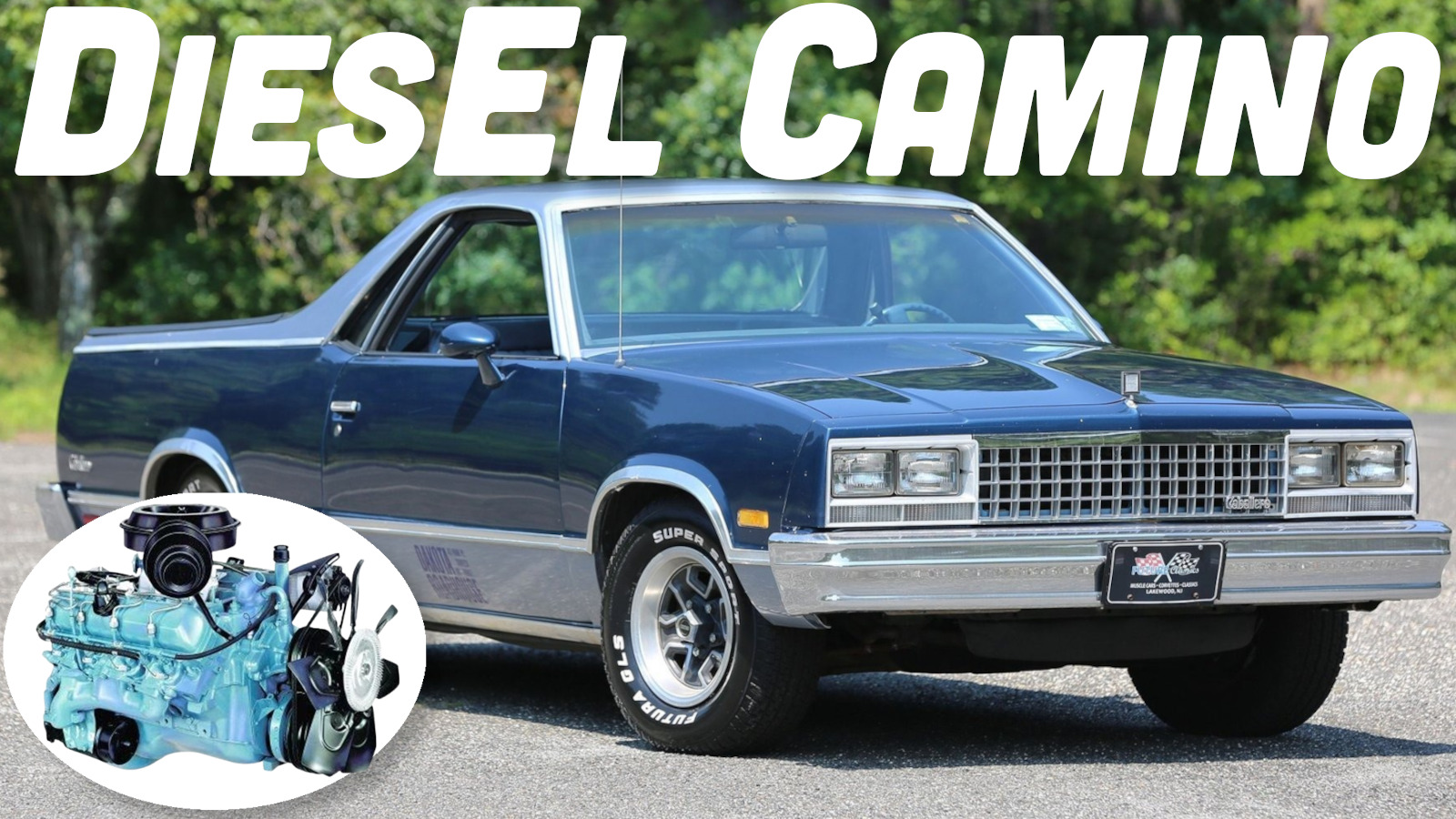







I seem to recall reading that Daryl Hannah drove one of these on biodiesel (or was it straight veggie oil?).
These V8 based diesels were reason why US cars had an atrocious reliability record here in Finland back in the 80’s. There were some tries for taxi use in Oldsmobile form and they failed miserably. My childhood friends dad drove a taxi back in the eighties, and he used to rant how shitty they were. Apparently the experiment in their company lasted less than year and then back to mercedes W123 diesels.